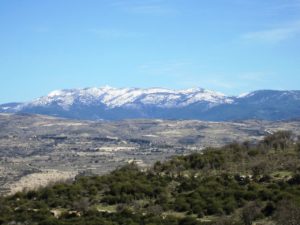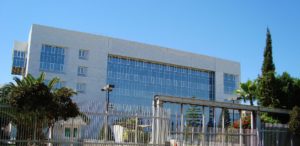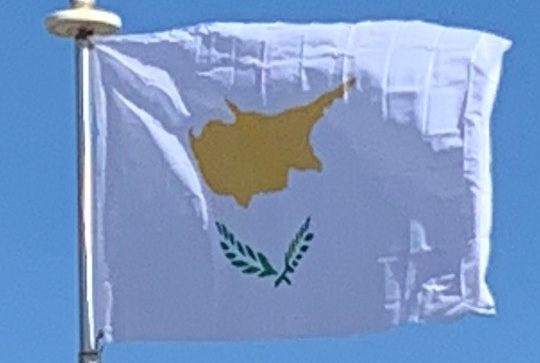
The physical relief of the island is dominated by two mountain ranges, the Troodos Mountains and the smaller Kyrenia Range, and the central plain they encompass, the Mesaoria. The Mesaoria plain is drained by the Pedieos River, the longest on the island. The Troodos Mountains cover most of the southern and western portions of the island and account for roughly half its area. The highest point on Cyprus is Mount Olympus at 1,952 m (6,404 ft), located in the center of the Troodos range. The narrow Kyrenia Range, extending along the northern coastline, occupies substantially less area, and elevations are lower, reaching a maximum of 1,024 m (3,360 ft). The island lies within the Anatolian Plate.
Economy:
In the early 21st century the Cypriot economy has diversified and become prosperous. However, in 2012 it became affected by the Euro-zone financial and banking crisis. In June 2012, the Cypriot government announced it would need €1.8 billion in foreign aid to support the Cyprus Popular Bank, and this was followed by Fitch downgrading Cyprus’s credit rating to junk status. Fitch said Cyprus would need an additional €4 billion to support its banks and the downgrade was mainly due to the exposure of Bank of Cyprus, Cyprus Popular Bank and Hellenic Bank, Cyprus’s three largest banks, to the Greek financial crisis.

The 2012–2013 Cypriot financial crisis led to an agreement with the Eurogroup in March 2013 to split the country’s second largest bank, the Cyprus Popular Bank (also known as Laiki Bank), into a “bad” bank which would be wound down over time and a “good” bank which would be absorbed by the Bank of Cyprus. In return for a €10 billion bailout from the European Commission, the European Central Bank and the International Monetary Fund, often referred to as the “troika”, the Cypriot government was required to impose a significant haircut on uninsured deposits, a large proportion of which were held by wealthy Russians who used Cyprus as a tax haven. Insured deposits of €100,000 or less were not affected.
Cyprus has been sought as a base for several offshore businesses for its low tax rates. Tourism, financial services and shipping are significant parts of the economy. Economic policy of the Cyprus government has focused on meeting the criteria for admission to the European Union. The Cypriot government adopted the euro as the national currency on 1 January 2008.
In recent years significant quantities of offshore natural gas have been discovered in the area known as Aphrodite (at the exploratory drilling block 12) in Cyprus’ exclusive economic zone (EEZ), about 175 kilometers (109 miles) south of Limassol. However, Turkey’s offshore drilling companies have accessed both natural gas and oil resources since 2013. Cyprus demarcated its maritime border with Egypt in 2003, with Lebanon in 2007, and with Israel in 2010. In August 2011, the US-based firm Noble Energy entered into a production-sharing agreement with the Cypriot government regarding the block’s commercial development.
